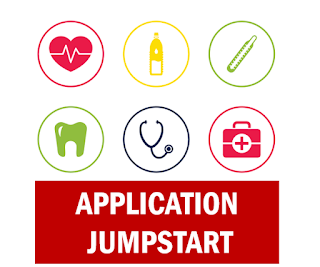This article is a portion of the following publication:
Sorenson, T.D. (2016). Accelerating Change in Healthcare: Considerations for the Health Professions Pipeline. The Advisor: Journal of the National Association of Advisors for the Health Professions, 366(3), 9-13.
"I like science and I want to help people."
Anyone who has interviewed candidates for a health professions program has heard this refrain when they ask the question, "Why do you want to pursue a career in [medicine / dentistry / pharmacy / nursing /etc.]?"
For me personally, I've heard some version of this declaration in nearly every interview I've completed over the past several years. This is not to say this is an inappropriate answer. Certainly we want to admit students whoa re strong in the sciences and have an innate desire to serve others. But as our healthcare system evolves, the best health care practitioners will be those that embrace a role that extends beyond having strong clinical knowledge and skills that they will apply with a patient-centered mindset. I would see a candidate in a unique light if I heard revised declarations such as the following:
- "I like science, I want to help people AND I want to learn how we build systems of care that ensure that my patients receive the highest quality services possible"
- "I like science, I want to help people AND I want to be part of an interprofessional team that works together to apply its collective knowledge and talents to deliver great care."
- "I like science, I want to help people AND I want to provide leadership on the frontlines of care to constantly find ways in which we can serve patients better."
These statements reflect three important trends that are influencing how health care is being delivered and how traditional roles of individual health professions are being disrupted.
Emphasizing Quality over Quantity: Today, most health care services are paid for in a "fee-for-service" model. A patient experiences a medical appointment, has a procedure or requires a stay in a health care facility and then the patient or third party (government or insurance company) pays a fee for the services received. It doesn't matter whether the service produces an effective outcome nor does it matter how many times the patients receive the service - each time a service is rendered, a fee is paid. In this model, quantity of service delivery is incentivized and expectations for quality are diminished.
The introduction of the Affordable Care Act has created a significant focus on shifting health care payment models such that quality is emphasized. As a result, payment models that typically require physicians to be the provider of a service and the entity billing for the service are changing. Hospitals and clinics are finding opportunities whereby they receive payments for managing the care of a payer's beneficiaries and have more flexibility in determining which practitioners can provide the services a patient needs. In turn, the payer is also setting expectations for achieving quality benchmarks, creating "report cards" for organizations and individual health care providers based on defined quality metrics and providing enhanced payments when those benchmarks are achieved. As health care organizations experience this increased flexibility in service delivery while being held accountable for higher expectations in quality, they are rethinking how they are deploying health care personnel. As mentioned previously, an emerging theme is "deploy the lowest cost personnel who can produce the best outcome." An example of this is that in primary care clinics certain chronic disease management activities are being managed by nurses, nurse practitioners, or pharmacists. This in turn allows physicians to spend more of their time engaged in more complicated diagnostic and management responsibilities.
Interdependent Teams are the Future: This rationalization of service delivery across different practitioners with distinct but complimentary skill sets is producing an environment in which teams of health care practitioners are working more closely together and becoming interdependent on each other's contributions. Less frequent is a scenario whereby a patient's care is delivered solely by a physician. Health science knowledge has exploded over the past decade and no single individual can adequately manage and apply it in increasingly complex health situations. The best sports teams are comprised of a group of individuals with unique talents, roles and responsibilities working in an orchestrated manner to achieve a common goal and health care teams are embracing a similar approach. As a result, health professions programs are increasingly investing in development of learning opportunities that bring together multiple disciplines to teach these groups of learners/practitioners to understand each others' roles, how to work effectively in teams, and ultimately produce better health outcomes through collaboration.
Adaptive Leadership Will Create the Systems of the Future: While what I'm describing is currently occurring in today's healthcare environment, it admittedly is not yet the norm in health care. We are in the midst of a period where the changes that will make team-based care and an emphasis on quality the normal way of doing business. The third idea contained in my rephrased "I like science and helping people" statements is leadership - a specific form of leadership that will drive these changes forward. Adaptive leadership is a leadership model that is effective when a group finds that:
- its deeply held beliefs are being challenged;
- the values that made it successful in the past are becoming less relevant;
- legitimate yet competing perspectives about the strategies to pursue change are emerging.
These three characterizations are certainly true of the healthcare environment today.
When faced with adaptive challenges, a group doesn't know exactly how it needs to change its work. It needs to experiment to find the solutions. There is no "authority" that has the answers needed. This environment feels less safe because the outcome is unknown - it feels illusive. This is where most health care organizations are today. The rules that guide the health care system have changed and are continuing to evolve. Health care organizations need to adapt within an environment that isn't stable. No one has "the answer" for how to respond and the future is ambiguous. To adapt and thrive in this environment, testing new ways of working is a necessity and that experimentation must be managed by the health care professionals who are on the front lines. Working in tandem with the formal organizational leadership, more than ever health care practitioners need to hold a mindset that "change" is the new normal and they have an opportunity to produce the activities that will find the adaptations critical for future success.
Stay tuned for part III of this article: Implications for Future Health Care Professionals
The author of this article, Dr. Todd Sorenson, is Professor and Associate Department Head, Department of Pharmaceutical Care and Health Systems, College of Pharmacy, University of Minnesota, Minneapolis, MN.













